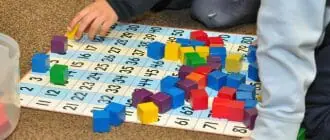Showcasing your strengths and abilities when applying for a teaching position can help you stand out from the other applicants. When potential employers look at a resume, it is easy for many candidates to look about the same. Writing a cover letter to attach to your resume allows you to highlight all the positive traits that will set you apart from other applicants.
But just what is a cover letter and what should you include in one? If you’ve been looking for the answers to these questions, you’ve come to the right place. This article will give you all the information you need to write a stellar cover letter that will help you land your dream teaching position.

How is a Cover Letter Different from a Resume?
A cover letter is a separate letter you present to potential employers along with your resume. While both documents are designed to show that you are qualified for a teaching position, there are some key differences between them.

First, resumes and cover letters follow a different format. Cover letters are a more formal mode of communication and feature full sentences and paragraphs. Resumes, on the other hand, are broken down into different sections. You’ll find lots of information in bulleted lists on a resume, but it won’t go into as much detail.
The main purpose of a resume is to present your work and education history and highlight a few key details, whereas a cover letter allows you to share more detailed information about your qualifications. Resumes stay pretty much the same regardless of the job you are applying for, while cover letters should be customized to match the requirements of each specific job. For example, if you are applying for a position teaching second grade at one school and a different position as a special educator at another school, you would write a customized letter for each position and explain why you are the best candidate for each job.
You can think of a resume as more of a list of your past accomplishments, while a cover letter should explain how you will use those qualifications to be the ideal teacher each supervisor is looking for.
Finally, resumes are more objective. You list facts about yourself and your accomplishments. In your cover letter is where you have the opportunity to explain why you think you are the person who is best suited for the teaching position you are applying for.
Why Should You Write a Cover Letter?
Writing a cover letter is not necessary for every position you apply for. There are a few considerations you will want to make before deciding whether you should write a cover letter to go with your resume for a given teaching position you are interested in.
First, be sure to carefully read the job posting. Some job posts will specifically mention that they want a cover letter included with the application. Obviously, in these cases, you’ll want to be sure to write a cover letter to submit with your resume.
If the posting doesn’t specifically state that a cover letter is required, then you can assess whether you think it will be beneficial for you to include one with your application. You will want to think about whether taking the time to write a cover letter will provide you with the benefits you’re looking for to help you get hired for the position. If your time is limited and you don’t have your resume put together, it may be more beneficial for you to invest your time into improving your resume, since that is one of the key things employers will want to see.
Other times when it is a good idea to write a cover letter are when you are transitioning to a new career or have a gap in your employment. In these cases, writing a cover letter can help you explain why you are looking to move into a new career or why you took a break from employment.
In other cases, if you have the time, you may choose to write a cover letter to showcase your skills and abilities to your potential employer. Sharing your specific achievements and qualifications in a cover letter may help an employer realize that you are the best candidate for their position.
Types of Cover Letters for Teaching Jobs
Your experience level and the specific position you are applying for will impact what you’ll want to include in your cover letter.

Below you’ll find a few different examples to get you started with writing the perfect cover letter for your situation:
- New Teacher: If you have recently graduated from college, the cover letter you include with your resume will look different from what an experienced teacher can include. You’ll want to take time to highlight your student teaching experience as well as any other experience (including volunteer work) you have had working with children. Since you’re fresh out of college, you may also choose to include information about honors or awards you received in school.
- Experienced Teacher: If you are an experienced teacher, you will want to be sure to provide information about the specific grade levels and/or subjects you have taught. Also include information about any student clubs you sponsored or any other relevant information from your time at your current school.
- Special Education Teacher: When you’re applying for a position as a special education teacher, you will also want to include information about your experience, whether you have already taught special education or not. You should also be sure to write about any certifications you have received that make you qualified to teach special education.
- ESL Teacher: If you are looking to get hired as an ESL teacher, you will want to include information about any certifications you have received. Experienced teachers should also write about their experiences working with English language learners. If this will be your first teaching job, write about your student teaching or volunteer work.
- High School Teacher: Since high school teachers cover more content and dive deeper into the content, you will want to be sure to showcase information that demonstrates that you are qualified for the position. Include information about any degrees you have received, your prior teaching experience, and your approach to working with older students.
- Art, Music, or PE Teacher: When you’re applying to teach art, music, or physical education, your cover letter should include information that explains your background and experience with the subject you are applying to teach.
What to Add in a Cover Letter for a Teaching Position
One very important thing to keep in mind when writing a cover letter is that it should be customized for the position you are applying for. You want the person reading the letter to see that you took the time to address what they are looking for in a teacher and didn’t just give them a very generic cover letter.

Start your cover letter with an opening paragraph. In this paragraph, you’ll want to introduce yourself and explain why you decided to apply for the teaching position. You should include specific information about the school and the teaching position you’re applying for in this paragraph. For example, you may say something like, “I am very excited for the opportunity to teach a diverse group of third graders at X Elementary School.” Also, add some information about why you want to teach at the school that has an open position and why you are excited to teach the particular grade-level or group of students.
The next part of the cover letter is where you’ll really get into why you are the best candidate for the position and why the school/district should hire you. In this section, you’ll be elaborating on the information included on your resume. When you’re writing this section, it is a good idea to consult the job posting an incorporate some of the keywords from the post into your writing. Also, whenever possible, include facts and specific data in your descriptions. This will show that you have information to back up your claims about your qualifications.

Below are a few key things to include in this portion of the letter:
- Education History: Include information about the degree(s) you have received and which school(s) you received them from. You may choose to list any academic awards or honors you received, or if you were a member of any honor societies in this section.
- Experience: Writing about your experience is essential. You want to show that you have work experience that has prepared you for the position you are applying for. If you are fresh out of college and don’t have any teaching experience, write about your student teaching position. You can also include any related volunteer work or other jobs you have had where you worked with students or took on a leadership role.
- Certifications and Training: If you’re applying for a position, such as special education or an ELL teacher, you will want to be sure to include information related to the certifications you have completed. If you have additional certifications that may not be a requirement for the position, include information about these as well. This can help you look more qualified for the position.
- Why You are a Strong Candidate: Tie together all the information you shared in the other sections to sum up why you are the best candidate for the job. Draw connections between how your education and experience will allow you to meet the social, emotional, and educational needs of the students you’ll be teaching.
After writing about yourself and highlighting why you are the best candidate for the job, it is time to close up your letter. In your closing paragraph, provide a quick recap of your qualifications and why you’ll be a good fit for the position. Share the best method of contact for you and your availability to further discuss the position. End your letter by thanking the principal/supervisor/hiring team for their time and for considering you for the teaching position.
Common Mistakes to Avoid When Writing Your Cover Letter
Now that we’ve shared what you want to do and include when writing a cover letter, let’s take a few moments to discuss what you want to avoid doing when putting together a cover letter.

Here are a few key mistakes you’ll want to make sure to avoid:
- Submitting a Generic Letter: Taking the time to personalize your cover letter is well worth it. A generic letter will be pretty useless since it won’t address why you are a good fit for a specific school or grade level. Principals or supervisors won’t want to waste their time reading fluff, so be sure to personalize each cover letter you submit.
- Leaving Out Important Information: Make sure that your cover letter includes all your contact information. You want a potential employer to be able to get in touch with you. Plus, if you leave out something so important when applying for a job, they’ll probably wonder what other mistakes you’ll make once you’re actually hired.
- Leaving Out Specific Information About Your Work Experience: A cover letter is a time to be very specific about your qualifications. When writing about your previous teaching positions, being specific is very important. Don’t just say you taught middle school science, for example. Describe the specific grade levels and subject areas you taught.
- Writing Too Much or Too Little: Everyone is busy, and no one has time to read a five-page essay about your life’s experiences. You want to make sure your cover letter presents all the important information in a clean and concise manner. On the other hand, a cover letter that is too short isn’t a good idea either. If you don’t include enough information about yourself and why you are the best candidate for a job, you may get overlooked.
- Being Careless: Finally, take your time to proofread your letter before you submit it. In addition to looking for obvious errors, like typos or missing punctuation, read through your writing, and make sure it flows and includes all the required information. You should also edit to make sure you don’t make a sloppy mistake, such as misspelling the name of the person the letter is addressed to or writing the wrong school name.
In Closing
If you’re applying for a teaching position, including a cover letter can help a potential employer see why you are the best fit for the job. A cover letter will allow you to showcase your strengths and accomplishments and explain why you should be hired for a given position. If you wish to create your own portfolio, you might want to check out these impressive digital teaching portfolio samples.
After you’re hired for a teaching position, you can continue to impress your supervisors by setting up a makerspace for your student. A makerspace is a learning space where students have the opportunity to create, experiment, and learn new things. These articles on makerspace activities for elementary school students, middle school students, and students with special needs can help you get your makerspace up and running.
Last Updated on February 27, 2023 by Emily
- Facebook9
- Twitter21
- Pinterest67
- 97shares




